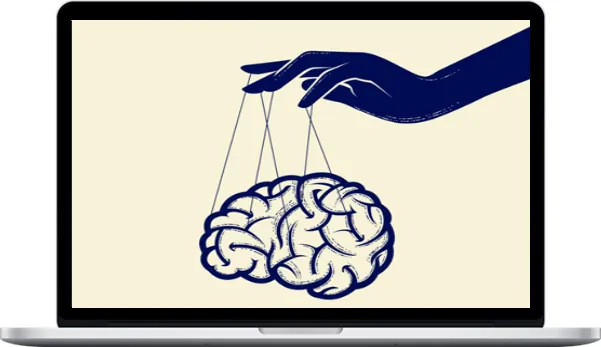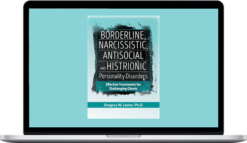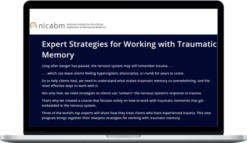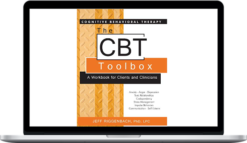NICABM – Strategies To Help Clients Heal From Patterns Of Gaslighting And Manipulation
$197.00 $89.00
»Delivery: Within 21 days
Description
NICABM – Strategies To Help Clients Heal From Patterns Of Gaslighting And Manipulation
How to Work with Gaslighting and Manipulation
The Hard-to-Recognize Emotional Abuse That Isolates, Confuses, and Undercuts Your Client’s Self-Worth
Gaslighting and manipulation is profoundly disorienting. When it’s happening, it can feel to your client like they’re caught in a confusing maze where reality constantly shifts.
Disturbingly, it’s not long before they’re left second-guessing their instincts, doubting their memories, and even questioning their sanity as the manipulator systematically undermines their confidence and sense of self.
The thing is, attempts to help your client come to grips with what’s happening can backfire. That’s because it’s such an insidious experience – one that’s often masked by the manipulator’s charm or feigned concern.
So to navigate the complexities of working with a client who’s being gaslit or manipulated, here’s just some of what you need to know:
- The subtle signs that your client is being gaslit or manipulated
- The (perhaps counterintuitive) link between manipulation and anxiety
- Trauma-informed strategies you can use with clients who’ve been gaslit or manipulated
We get into all of that and more with 18 of the top minds in the field in this brand new course . . .
Strategies to Help Clients Heal from Patterns of Gaslighting and Manipulation
Working with the Relationship Between Attachment Trauma and Manipulation
Richard Schwartz, PhD Pat Ogden, PhD Usha Tummala-Narra, PhD
Eboni Webb, PsyD Laurel Parnell, PhD Deany Laliotis, LICSW
Juliane Taylor-Shore, LPC, LMFT, SEP
- One Core Belief That Can Keep Clients Stuck in Cycles of Manipulation (and How to Address It)
- How to Work with Gaslighting or Manipulation That Stems from an Authority Figure
- An EMDR Approach to Help Gaslit or Manipulated Clients Rebuild a Sense of Trust (In Themselves and Others)
- A Strategy to Help Clients Differentiate from Relationships Characterized by Gaslighting or Manipulation
Strategies to Help Clients Recognize and Respond to Gaslighting or Manipulation
Ruth Lanius, MD, PhD Stan Tatkin, PsyD, MFT Eboni Webb, PsyD
Chris Willard, PsyD George Faller, MS
- Subtle Signs That Your Client Is Experiencing Gaslighting or Manipulation
- One Counterintuitive Trait That Could Make Your Client More Susceptible to Manipulation
- Three “Waves” of Gaslighting That Clients Often Experience (and How to Help Your Client Make Sense of This Cycle)
- A Key First Step to Addressing Gaslighting and Manipulation in an Intimate Relationship
How to Help Clients Free Themselves (Safely) from a Manipulative Relationship
Ruth Lanius, MD, PhD Thema Bryant, PhD Frank Anderson, MD
Usha Tummala-Narra, PhD Zindel Segal, PhD Chris Willard, PsyD
- One Strategy to Help Clients Safely Exit a Toxic (or Even Dangerous) Relationship
- Specific Skills to Teach Clients BEFORE Attempting to Confront Gaslighting or Manipulation
- How to Help Clients Recognize, Honor, and Circumvent the Protective Strategies that Keep Them Stuck in Harmful Relationships
- Helping Your Client Map Out What a Healthy Relationship Might Look Like for Them (Especially if They’ve Never Had One)
- One Factor That Can Be Especially Critical When Working with Clients Stuck in Manipulative Relationships (and How to Help Clients Develop It)
Helping Clients Navigate Gaslighting or Manipulation within Family Relationships
Lynn Lyons, LICSW Eboni Webb, PsyD
Russell Kolts, PhD Raymond Rodriguez, LCSW-R
- The Key Link Between Anxiety and Manipulation (and the Impact It Can Have on Families)
- Communication Patterns That Commonly Give Rise to Manipulation – and How to Teach Families Healthier Patterns of Relating
- How to Work with Adolescent Clients Who Are Being Gaslit or Manipulated by Their Family
- How to Work with a Parent Who Engages in Gaslighting or Manipulation
- Two Ways to Help Parents Respond to Children Who Display Manipulative Behaviors
More courses from the same author: NICABM
Delivery Policy
When will I receive my course?
You will receive a link to download your course immediately or within 1 to 21 days. It depends on the product you buy, so please read the short description of the product carefully before making a purchase.
How is my course delivered?
We share courses through Google Drive, so once your order is complete, you'll receive an invitation to view the course in your email.
To avoid any delay in delivery, please provide a Google mail and enter your email address correctly in the Checkout Page.
In case you submit a wrong email address, please contact us to resend the course to the correct email.
How do I check status of my order?
Please log in to HealthcareCourse account then go to Order Page. You will find all your orders includes number, date, status and total price.
If the status is Processing: Your course is being uploaded. Please be patient and wait for us to complete your order. If your order has multiple courses and one of them has not been updated with the download link, the status of the order is also Processing.
If the status is Completed: Your course is ready for immediate download. Click "VIEW" to view details and download the course.
Where can I find my course?
Once your order is complete, a link to download the course will automatically be sent to your email.
You can also get the download link by logging into your HealthcareCourse account then going to Downloads Page.
Related products
Total sold: 1
Total sold: 8










